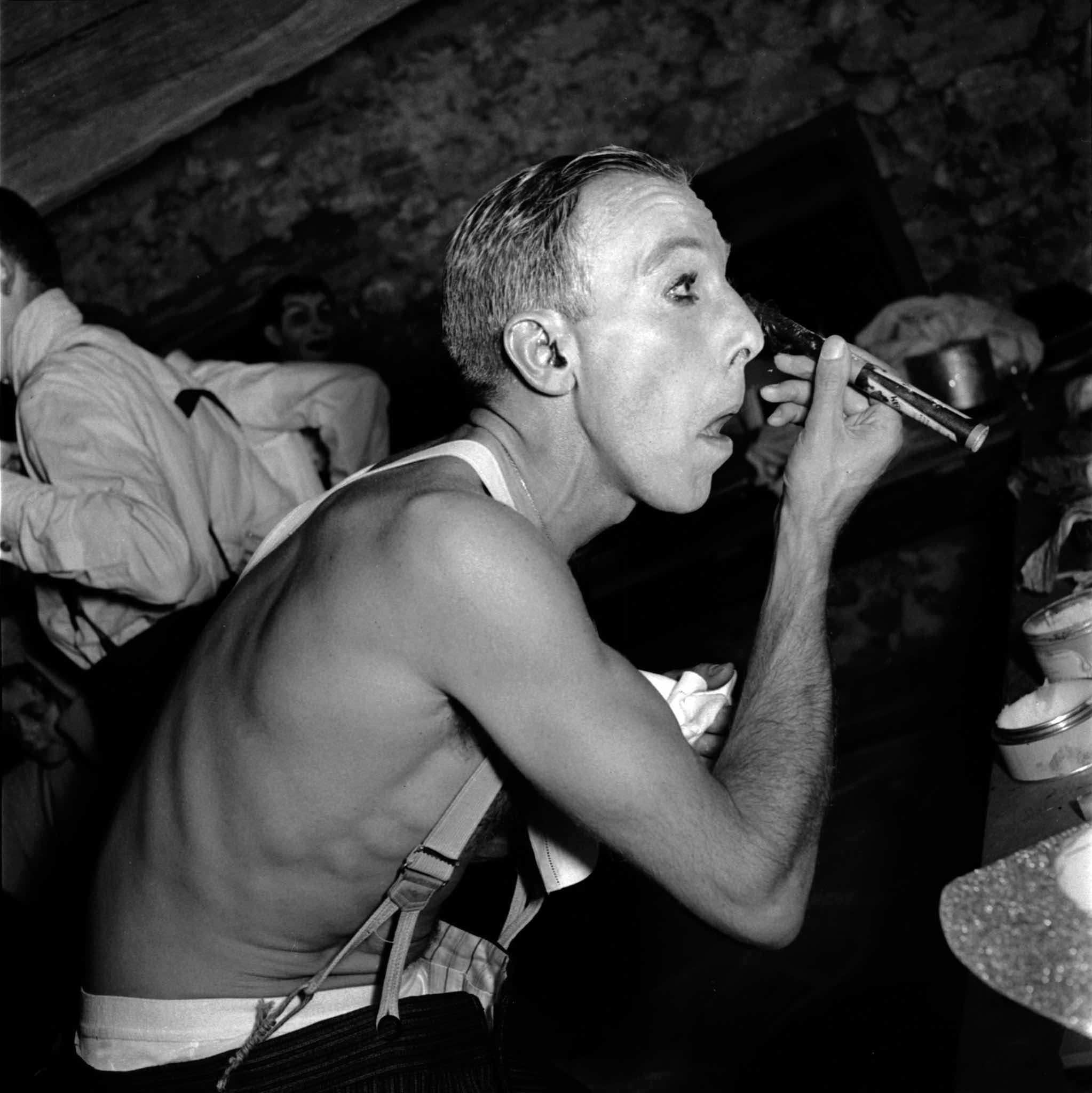HORVATLAND - THE '50s - CELEBRITIESGO TO HOME
2010, from Autobiography, in my iPad application Horvatland.
When I first set foot in Paris, this city seemed to me the capital of the world. The world of fashion, of course, but also of painting, literature, theatre and above all, as I saw it, of photojournalism: because it was here that Magnum was based. I remember July 1951 as a kind of triumphal escalation: I was invited to a ball given by Jacques Fath, Dior’s main rival, and to the first fashion show by Givenchy, the rising star. I met the editors of Paris-Match and Réalités, who bought some of my photos, and I did a portrait of Maxime de la Falaise, the muse of Parisian intelligentsia, in her boudoir on the Île Saint-Louis. I was persuaded that this progression would eventually lead me to the office in Place Saint-Philippe du Roule, where Henri Cartier-Bresson, every Wednesday at 10 a.m., allowed young photographers to show him their work, and I didn’t doubt that he would invite me to join his team. His criticism came as a shock. ‘You’re using a Rolleiflex? Did God put your eyes on your belly? And a flash? It’s an arbitrary interference! And colour? I would only use colour if I could have my own palette, I wouldn’t rely on Kodak’s!’ He turned the pile of my prints upside down, so as not to be distracted by the expressions on people’s faces, and examined each of them carefully, but only from the point of view of their composition, pointing out my mistakes and ending by the conclusion: ‘You got it all wrong! Go to the Louvre and look at the work of Poussin!’ In retrospect, this slating reminds me of the cane strokes by which the masters of Zen used to hit their disciples on the head. As a result, the best among them, after years of meditation and perhaps only at the end of their lives, eventually saw the light and achieved satori. I have wondered if this was what Henri had in mind: it is well known that he was interested in Zen and liked to compare photography to Japanese archery. In any case, his blows were not in the least hostile. From that day, he considered me as one of his disciples, though a somewhat marginal one. I have always been thankful for this lesson and I cannot think of anyone – except my mother – who has had as much influence on my life and my work. Still, it took me several decades to integrate his teaching and I still wonder if I understood it completely.


1951, Paris, Jacques Fath, fashion designer

1951, Paris, Jacques Fath, fashion designer
